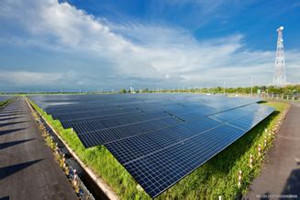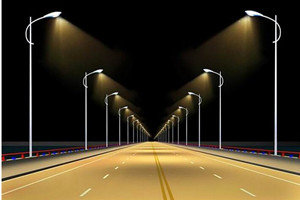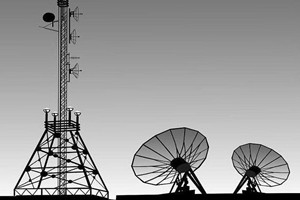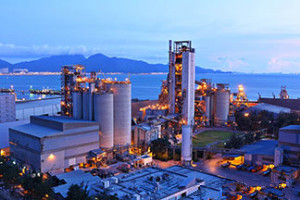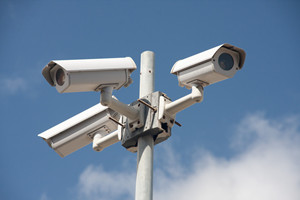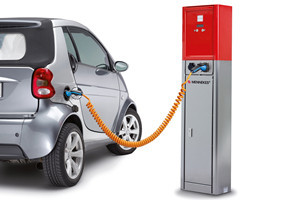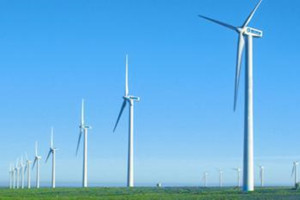Surge Protection Device
Surge protection device (or abbreviated as SPD) is not a product that known to the public. The public do know that power quality is a big problem in our society in which more and more sensitive electronics or electrical products are been used. They know about UPS which can provide uninterrupted power supply. They know voltage stabilizer which, as its name suggest, stabilize or regulate the voltage. Yet most people, enjoying the safety that surge protection device brings, don’t even realize its existence.
We’ve been told since childhood that plug off all electrical appliance during thunderstorm otherwise the lightning current may travel inside the building and damage the electrical products.
Well, lightning is indeed very dangerous and harmful. Here is some pictures showing its destruction.
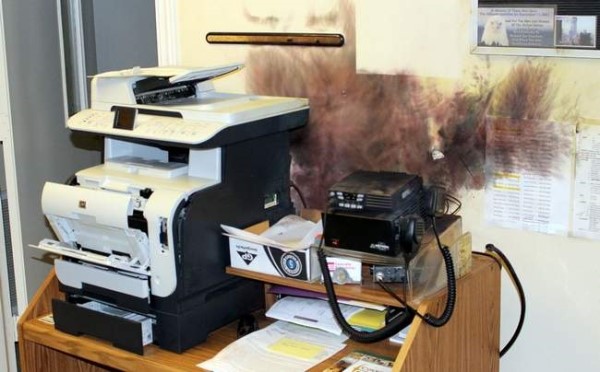
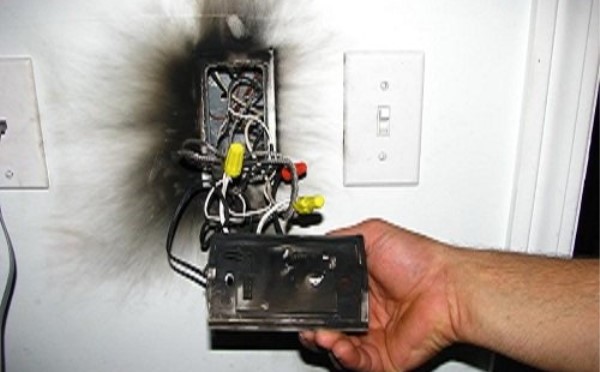
Index of this presentation
Well, this is about lightning. How does lightning related to the product surge protection device? In this article, we will give a thorough presentation on this topic. We are going to introduce:
Lightning Protection VS Surge Protection: Related yet Different
Surge
- What is surge
- What cause surge
- The effects of surge
Surge Protective Device (SPD)
- Definition
- Function
- Applications
- Components: GDT, MOV, TVS
- Classification
- Key Parameters
- Installation
- Standards
Introduction
This article assumes that the reader has no background knowledge in surge protection. Some of the contents are simplified for the sake of easy understanding. We tried to transfer the technical expression into our daily language yet at the same time, it is inevitable that we’ll lose some accuracy.
And in this presentation, we adopt some surge protection educational material released by various lightning / surge protection companies which we obtained from public source. Herein we thank them for their efforts in educating the public. Should any material is in dispute, please contact us.
Another important note is that lightning protection and surge protection is still not a precise science. For example, we know that lightning likes to hit the tall and pointed objects. That’s why we use lightning rod to attract lightning and shunt its current to the ground. Yet this is a tendency based on probability, not a rule. In many cases, lightning hit other objects although there is a tall and pointed lightning rod nearby. For an example, ESE (Early Streamer Emission) is considered to be a updated form of lightning rod and thus should have better performance. Yet, it is a very controversial product which many experts believe and approve that it has no advantages over a simple lightning rod. As in surge protection, the dispute is even bigger. IEC standard, which is mainly proposed and drafted by European experts, define the waveform of direct lightning as 10/350 μs impulse which UL standard, mainly proposed and drafted by American experts, do not recognize such waveform.
From our perspective, our understanding of lightning will become more and more precise and accurate eventually as we do more research on this field. For example, all of the surge protection products nowadays are developed based on the theory that lightning current is single waveform impulse. Yet some SPDs that can pass all the tests inside the lab still fail on the field when lightning actually hits. Thus recent years, more and more experts believe that lightning current is a multiple waveforms impulse. This is advancement and surely will improve the performance of surge protection devices that developed based on that.
Yet in this article, we are going to dig into the controversial topics. We try to give a elementary yet thorough, comprehensive overall introduction of surge protection and surge protection device. So, let’s begin.
1. Lightning Protection VS Surge Protection
You may ask why do we need to know anything about lightning protection when we talk about surge protection. Well, this two concepts are closely related as many surges are actually caused by lightning. We talk more about the cause of surges in the next chapter. Some theories believe that surge protection is part of lightning protection. These theories believe that lightning protection can be divided into two parts: external lightning protection whose main product is lightning rod (air terminal), down conductor and earthing material and internal lightning protection whose major product is surge protection device, either for AC/DC power supply or for data/signal line.
One of the strong advocate of this classification is ABB. In this video, ABB (Furse is an ABB company) give a very thorough presentation of the lightning protection in their opinions. For the lightning protection of a typical building, there should be external protection to shunt the lightning current to the ground and internal protection to prevent power supply and data/signal line from damage. And in this video, ABB believes that air terminal/conductors/earthing material are products mainly for direct lightning hit and surge protection device are mainly for protection of indirectly lightning (a nearby lightning).
Another Theory try to contain lightning protection within the range of external protection. One of the reason the make such distinction is that the former classification may mislead the public to think that surge is solely caused by lightning which is far from truth. Based on statistics, only 20% of surge are caused by lightning and 80% of surges are caused by factor inside the building. You can see that in this lightning protection video, it mention nothing about surge protection.
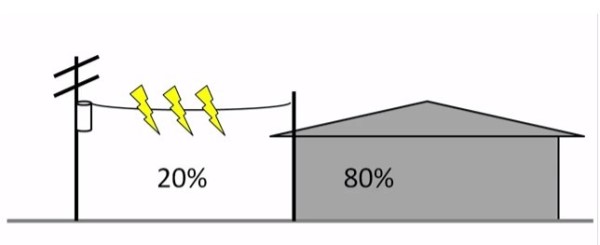
Lightning protection is a complicated system involving many different products. Surge protection is only part of a coordinated lightning protection system. For common consumers, it is not necessary to dig into the academic discussion. After all, like we say, lightning protection is still not a precise science. So for us, this may not be a 100% recognized yet easy way to understand lightning protection and its relationship with surge protection device.
Lightning Protection
External Lightning Protection
- Air Terminal
- Conductor
- Earthing
- External Shielding
Internal Lightning Protection
- Internal Shielding
- Equipotential Bonding
- Surge Protection Device
Before we finish this session, we are going to introduce the last concept: lightning stroke density. Basically it means how frequent the lightning stroke is in a certain area. On the right is a lightning stroke density map of the world.
Why is lightning stroke density important?
- From sales and marketing point, area with high lightning density have stronger needs for lightning and surge protection.
- From technical point, an SPD installed on high lightning hit area should have bigger surge current capacity. A 50kA SPD may survive 5 years in Europe but only survive 1 year in Philippines.
Prosurge’s major markets are North America, South America and Asia. As we can see on this map, these markets are all fall within high lightning stroke density area. This is a strong evidence that our surge protection device is of premium quality and thus can survive in areas with most frequent lightning strokes. Click and check some of our surge protection projects around the world.
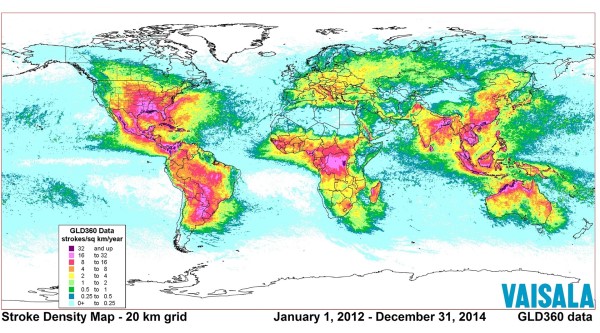
2. Surge
Well, we are going to talk more about surges in this session. Although we used the term surge many times in previous session, yet we haven’t given it a proper definition yet. And there are a lot of misunderstandings about this term.
What is Surge?
Here are some basic facts about surges.
- Surge, Transient, Spike: A sudden momentary rise in current or voltage in an electrical circuit.
- It happen in millisecond (1/1000) or even microsecond (1/1000000).
- Surge is not TOV (Temporary Overvoltage).
- Surge is the most common cause of equipment damage and destruction. 31% of electronic equipment damage or losses are due to surges. (source from ABB)
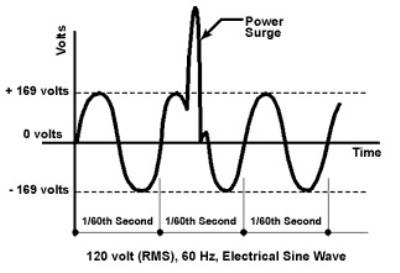
Surge VS Overvoltage
Some people think that surge is overvoltage. Like the picture above shows, when the voltage spikes, there is a surge. Well, this is understandable yet not accurate, even very misleading. Surge is a kind of overvoltage yet overvoltage is not surge. We now know that surge happen in millisecond (1/1000) or even microsecond (1/1000000). However, overvoltage can last much longer, seconds, minutes even hours! There is a term called temporary overvoltage (TOV) to describe this long duration overvoltage.
In fact, not only surge and TOV are not the same thing, TOV is also the major killer for a surge protection device. An MOV based SPD can quickly lower its resistance to almost zero when a surge happens. Yet under continuous voltage, it burns quickly and thus poses a very serious safety threat. We’ll talk more about this in later session when we introduce surge protection devices.
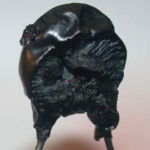
| Temporary Overvoltage (TOV) | Surge | |
| Caused by | LV/HV-system faults | lightning or switching overvoltage |
| Duration | Long millisecond to a few minutes or hours | Short Microseconds (lightning) or millisecond (switching) |
| MOV status | Thermal runaway | Self-recovery |
What Causes Surge?
These are some commonly acknowledged causes for surge:
- Lightning Stroke on a Lightning Rod
- Lightning Stroke on a Aerial Line
- Electromagnetic Induction
- Switching Operation (much more frequent yet with lower energy)
We can see that some are lightning related and some are not. Here is an illustration of lightning related surges.
Yet always keep in mind that not all surges are caused by lightning so its not only in thunderstorm that your equipments may get destructed.
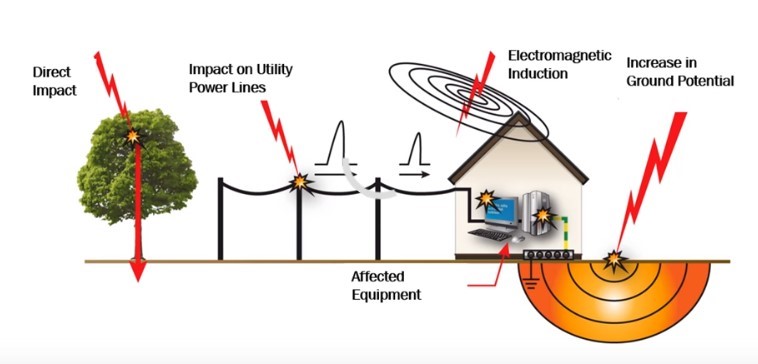
The Effects of Surge
Surge can bring much harm and based on statistics, power surges cost US companies over $80 billion/year. Yet when we evaluate the effects of surge, we can’t limit ourselves on only seeing the visible. Actually, surge poses 4 different effects:
- Destruction
- Degradation: Gradual deterioration of internal circuitry. Premature equipment failure. Normally caused by continuous low level surge, it doesn’t destroy the equipment at one time but overtime it destroy it.
- Downtime: loss of productivity or important data
- Safety Risk
On the right is a video in which surge protection professionals do a test to verify how a surge protection device can truly prevent electrical products from surge destruction. You can see that when the DIN-rail SPD is removed, the coffee maker explodes when hit by surge generated by the lab.
This video presentation is really dramastic. However, some of surge’s damage is not so visible and dramastic yet it costs us dearly, for example, the downtime it brings. Image a company is experiencing downtime for a day, what would be the cost for that?
Surge not only brings property loss, but also brings personal safety risk.

The most catastrophic accident in China high speed train history is caused by lightning and surge. More than 200 casualties.
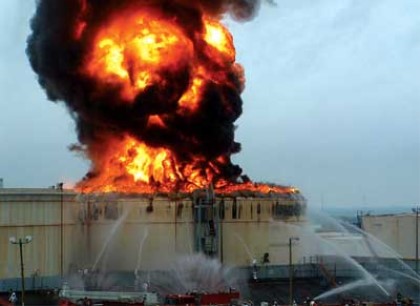
The Chinese lightning and surge industry began on 1989 after a catastrophic fire explosion accident on the oil storage tank due to lightning hit. And it also cause many casualties.
3. Surge Protection Device / Surge Protective Device
With the basic knowledge of lightning / surge protection and surge presented in previous session, we are going to learn more about surge protection device. Strangely, it should be called Surge Protective Device based all formal technical documents and standards. Yet many people, even professional in surge protection field like to use the term surge protection device. Maybe because it sounds more like a daily language.
Basically you can see two types of surge protection on the market like below pictures show. Note that pictures are not in acutal ratio of the item. Panel type SPD is normally much larger in size than DIN-rain SPD.
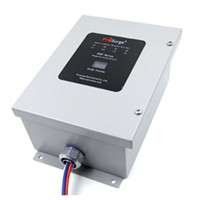
Panel Type Surge Protection Device
Popular in UL Standard Market
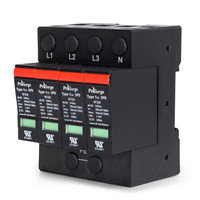
DIN-rail Surge Protection Device
Popular in IEC Standard Market
So What exactly is a surge protection device? As its name suggest, it is a device that protects against surges. But how? Does it eliminate the surge? Let’s take a look at the function of an surge protection device (SPD). We can say that an SPD is used to divert excess voltage and current safely to the ground before it reaches protected equipment. We can use surge protection equipments in lab to see its function.
Without Surge Protection

Voltage up to 4967V and will damage the protected equipment
With Surge Protection
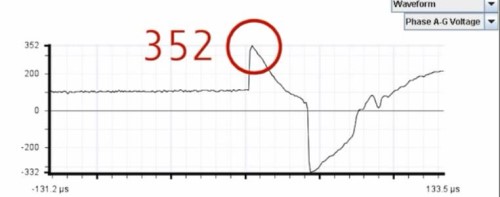
Voltage is limited to 352V
How does SPD work?
SPD is voltage sensitive. Its resistance reduced sharply as voltage increase. You can imagine SPD as a gate and surge as flood. Under normal situation, the gate is shut but when seeing surge voltage coming, the gate quickly open so the surge can be diverted away. It will automatically reset to high impedance status after the surge ends.
SPD takes the surge so the protected equipment can survive. Overtime, SPD will come to end of life due to the many surges it endures. It sacrifices itself so the protected equipment can live.
The ultimate fate for an SPD is to sacrifice.
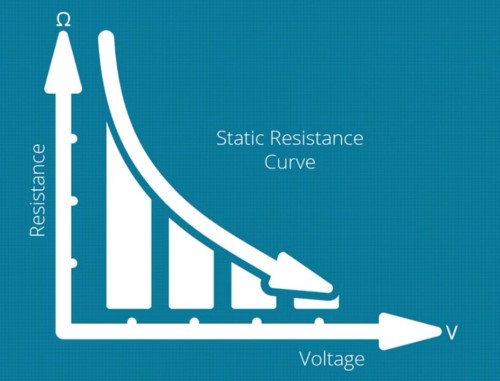
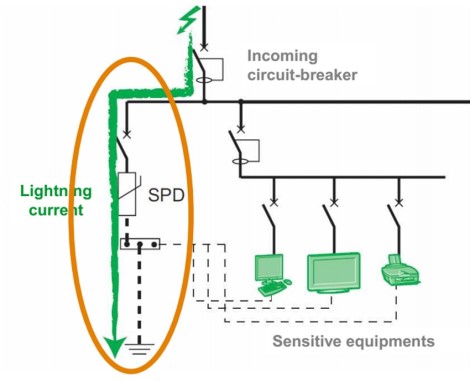
Surge Protection Components
In this session, we are going to talk about SPD components. Basically, there are 4 major SPD components: spark gap, MOV, GDT and TVS. These components have different characteristics yet they all serve a similar function: understand normal situation, their resistance is so huge that no current can follow yet under surge situation their resistance instantly drop to almost zero so that the surge current can pass to the ground instead of flowing to the protected downstream equipments. That’s why we call these 4 components non-linear components. Yet they do have differences and we may write another article to talk about their differences. But for now, all we need to know is that they all serve the same function: to divert to the surge current to the ground.
Let’s take a look at these surge protection components.
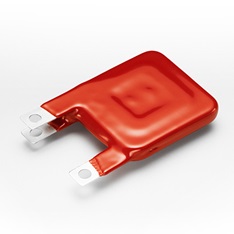
Metal Oxide Varistor (MOV)
The Most Common SPD Component
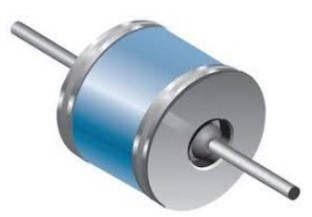
Gas Discharge Tube (GDT)
Can Used in Hybrid with MOV
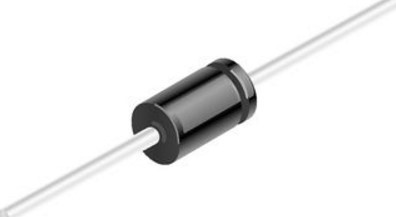
Transient Surge Suppressor (TVS)
Popular in Data/Signal SPD Due to Its Tiny Size
Metal Oxide Varistor (MOV) and Its Evolution
MOV is the most common SPD component and thus we’ll talk more about it. The first thing to remember is that MOV is not a perfect component.
Comprised typically of zinc oxide that conducts when it is exposed to an overvoltage that exceeds its rating, MOVs have a finite life expectancy and degraded when exposed to a few large surges or many smaller surges, and will eventually short to ground creating an end of life scenario. This condition will cause a circuit breaker to trip or a fused link to open. Large transients may cause the component to open and thus bring about a more violent end to the component itself. MOV is typically used to suppress surge found in AC power circuits.
In this ABB video, they give a very clear illustration of how MOV works.
SPD manufacturers do a lot a research on the safety of SPD and a lot of such work is to solve the safety problem of MOV. MOV has been evolved during the past 2 decades. Now we have updated MOV like TMOV (normally a MOV with built-in fuse) or TPMOV (thermally protected MOV) which improve its safety. Prosurge, as one of the leading TPMOV manufacturer, has contributed our efforts to the better performance of MOV.
Prosurge’s SMTMOV and PTMOV are two updated version of traditional MOV. They are fail-safe and self-protected components adopted by major SPD manufactures to build their surge protection products.
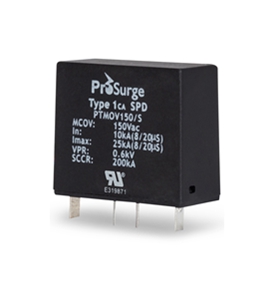
25kA TPMOV
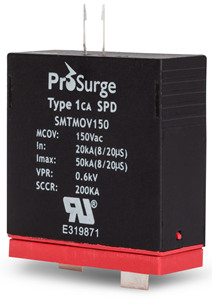
50kA/75kA TPMOV
Surge Protection Device Standards
Generally speaking, there are two major standards: IEC standard and UL standard. UL standard is mainly applicable in North America and some parts in South America and Philippines. Clearly IEC standard is more extensively applicable around the world. Even the Chinese standard GB 18802 is borrowed from IEC 61643-11 standard.
Why can’t we have a universal standard around the world? Well, one of the explanation is that European experts and US experts have different opinions on the understanding of lightning and surge.
Surge protection is still an evolving subject. For example, previous there is no official IEC standard in SPD used in DC/PV application. The prevailing IEC 61643-11 is only for AC power supply. Yet now we have the newly released IEC 61643-31 standard for SPD used in DC/PV application.
IEC Market
IEC 61643-11 (AC Power System)
IEC 61643-32 (DC Power System)
IEC 61643-21 (Data & Signal)
EN 50539-11 = IEC 61643-32
UL Market
UL 1449 4th Edition (Both AC and DC Power System)
UL 497B (Data & Signal)
Surge Protection Device Installation
Well, this may be the most easy session to write about because our suggestion is that you can go to Youtube because there are a lot of videos about SPD installation, either be a DIN-rail SPD or a panel SPD. Of course, you can check our project photos to learn more about. Noted that the installation of an surge protection device should be done by a qualified / licensed electrician.
Surge Protection Device Classifications
There are several ways to classify surge protection device.
- By Installation: DIN-rail SPD VS Panel SPD
- By Standard: IEC Standard VS UL Standard
- By AC/DC: AC Power SPD VS DC Power SPD
- By Location: Type 1/2/3 SPD
We’ll introduce in details the classification of UL 1449 standard. Basically, in UL standard the type of an SPD is determined by its installation location. If you would like to learn more, we suggest you to read this article published by NEMA.
Also we find a Video on Youtube presented by Jeff Cox that gives a very clear introduction of the different types on surge protection device.
Here are some pictures of type 1/2/3 surge protection device in UL standard.
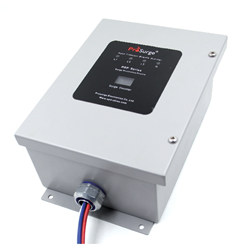
Type 1 Surge Protection Device: First Line of Defence
Installed outside the building at service entrance
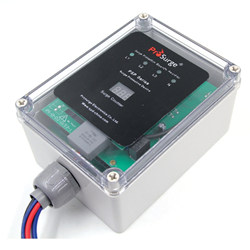
Type 2 Surge Protection Device: Second Line of Defence
Installed inside the building at branch panel
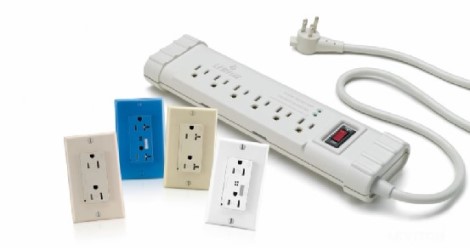
Type 3 Surge Protection Device: Last Line of Defence
Normally refer to Surge Strip and Receptacle installed next to the protected equipment
Noted that IEC 61643-11 standard also adopts similar terms like type 1/2/3 SPD or Class I/II/III SPD. These terms, though differs from the terms in UL standard, share similar principle. Class I SPD takes the initial surge energy which is the strongest and Class II and Class III SPDs handle the remaining surge energy which is already diminished. Together, the Class I/II/III surge protection devices forms an coordinated multi-layered surge protection systems which is considered to be the most effective.
The picture on the right shows the SPD at every level on installation in IEC standard.
We’ll talk a little bit about one difference between the type 1/2/3 in UL standard and IEC standard. In IEC standard, there is a term called lightning impulse current and its sign is Iimp. It is a simulation of the impulse of direct lightning and its energy is in the waveform of 10/350. Type 1 SPD in IEC standard must indicate its Iimp and SPD manufacturers normally use spark gap technology for type 1 SPD as spark gap technology allows a higher Iimp than MOV technology in the same size. Yet the term Iimp is not recognized by UL standard.
Also another key difference is that SPD in IEC standard are normally DIN-rail mounted yet SPD in UL standard are hard-wired or panel mounted. They look different. Here is some pictures of IEC standard SPD.
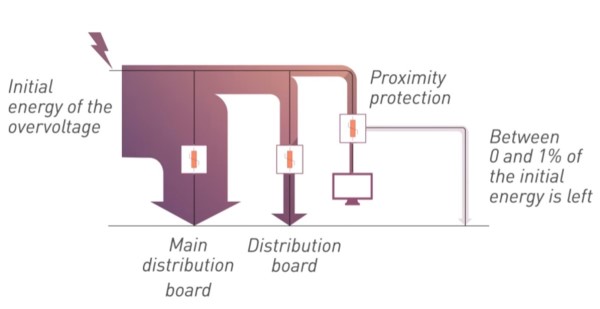
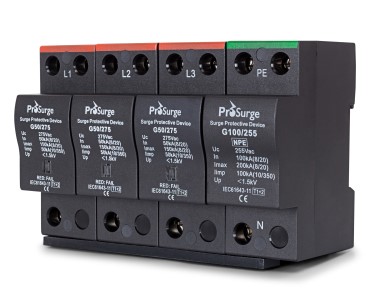
Type 1/Class I SPD
First Line of Defense
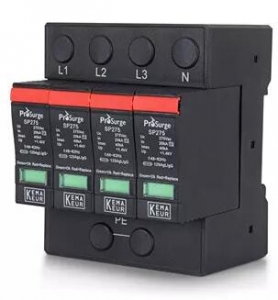
Type 2/Class II SPD
Second Line of Defense
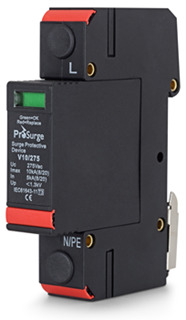
Type 3/Class III SPD
Last Line of Defense
As for other classifications, we may elaborate them later in other articles as it may be quite lengthy. Right now, all you need to know is that SPD is classified by types both in UL and IEC standards.
Key Parameters of Surge Protection Device
If you look at a surge protection device, you’ll see several parameters on its marking, for example, MCOV, In, Imax, VPR, SCCR. What do they mean and why it is important? Well, in this session, we are going to talk about it.
Nominal Voltage (Un)
Nominal means ‘named’. So a nominal voltage is the ‘named’ voltage. For example, the nominal voltage of the supply system in many countries is 220 V. But its actual value is allowed to vary between a narrow range.
Maximum Continuous Operating Voltage (MCOV/Uc)
The highest amount of voltage the device will allow to pass through continuously. MCOV is normally 1.1-1.2 time higher than Un. But in area with unstable power grid, voltage will go very high and thus must select a higher MCOV SPD. For 220V Un, European countries can choose 250V MCOV SPD but in some markets like India, we recommend MCOV 320V or even 385V. Notice: Voltage above MCOV is called Temporary Overvoltage (TOV). More than 90% of SPD burnt is due to TOV.
Voltage Protection Rating (VPR) / Let-through Voltage
It is the maximum amount of voltage that a SPD will allow to pass through to the protected device and of course it is the lower the better. For example, the protected device can withstand maximum 800V. If the SPD’s VRP is 1000V, the protected device will be damaged or degraded.
Surge Current Capacity
It is the maximum amount of surge current a SPD can shunt to ground during a surge event and is an indicator of life span of a SPD. For example, a 200kA SPD has a longer life span than a 100kA SPD under same situation.
Nominal Discharge Current (In)
It is the peak value of the surge current through the SPD. SPD need to remain functional after 15 In surges. It is indicator of the robustness of a SPD and it is measure of how the SPD performs when installed and subjected to operating scenarios closer to real life situation The higher the better.
Maximum Discharge Current (Imax)
It is the peak value of the surge current through the SPD. SPD need to remain functional after 1 Imax surges. Typically, it is 2-2.5 time of the value of In. It is also the indicator of the robustness of a SPD. But it is an less important parameter than In because Imax is an extreme test and in real situation, surge normally will not have such strong energy. For this parameter, the higher the better.
Short Circuit Current Rating (SCCR)
It is the maximum level of short-circuit current that a component or assembly can withstand and the higher the better. Prosurge’s major SPDs passed 200kA SCCR test per UL standard without external circuit breaker and fuse which is the best performance in industry.
Surge Protection Device Applications
Surge protection devices are applied extensively on various industries, especially for those critical-mission industries. Below is a list of surge protection applications and solutions that Prosurge prepare. In each applications, we indicates the SPD required and its installation locations. If you are interested in any of the applications, you can click and learn more.
Summary
Finally, we come to the end of this article. In this article, we talk about some interesting stuff like lightning protection, surge protection, surge and surge protection device. I hope that you already understand the basics of surge protection device. But if you would like to learn more about this subject, we have other articles on our surge protection education section on our website.
And the last yet most important part of this article is to offer our thanks to those companies who produce a lot of videos, photos, articles and all kinds of material on the subject of surge protection. They are the forerunner in our industry. Inspired by them, we are contributing our share too.
If you like this article, you can help share it!


